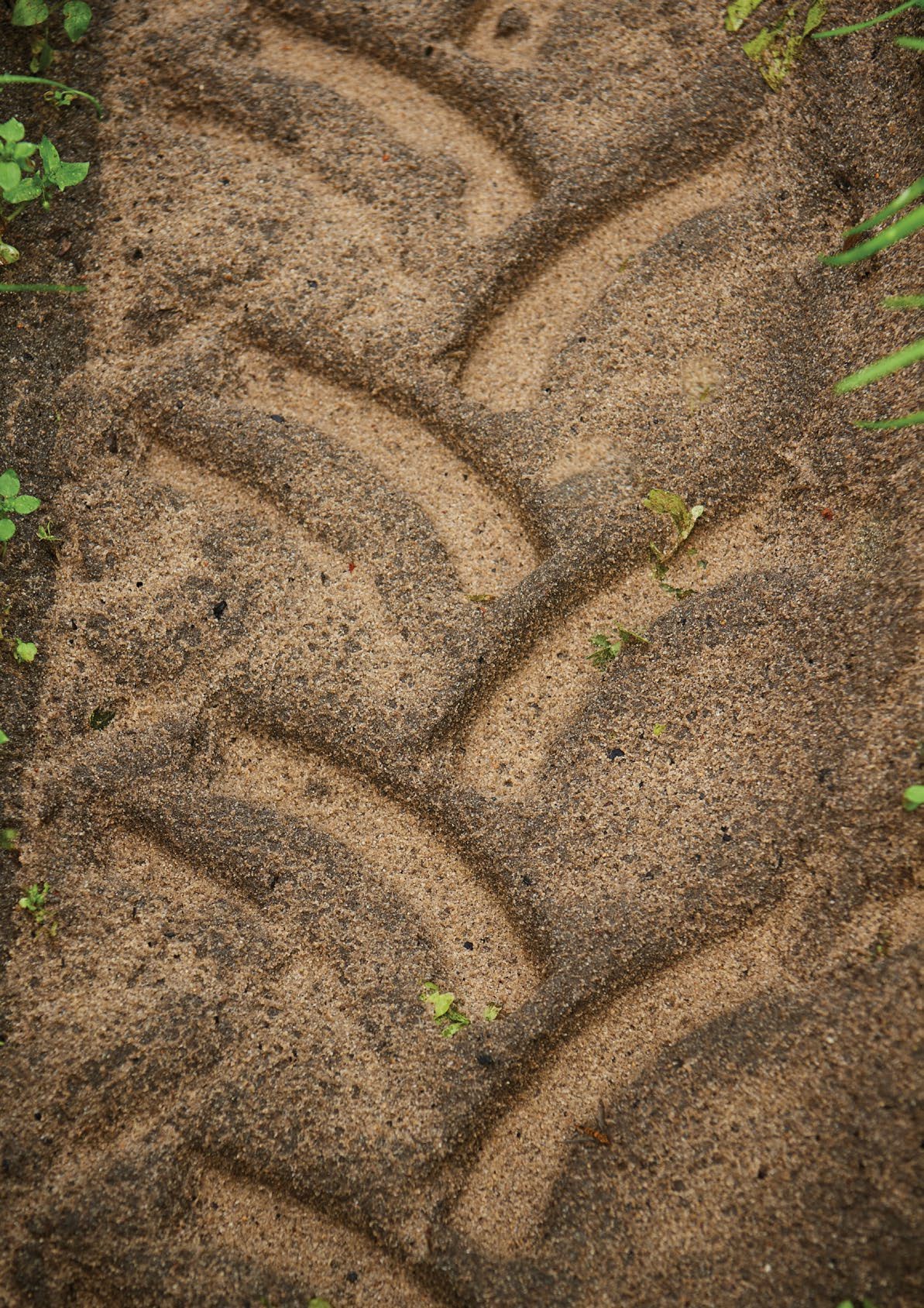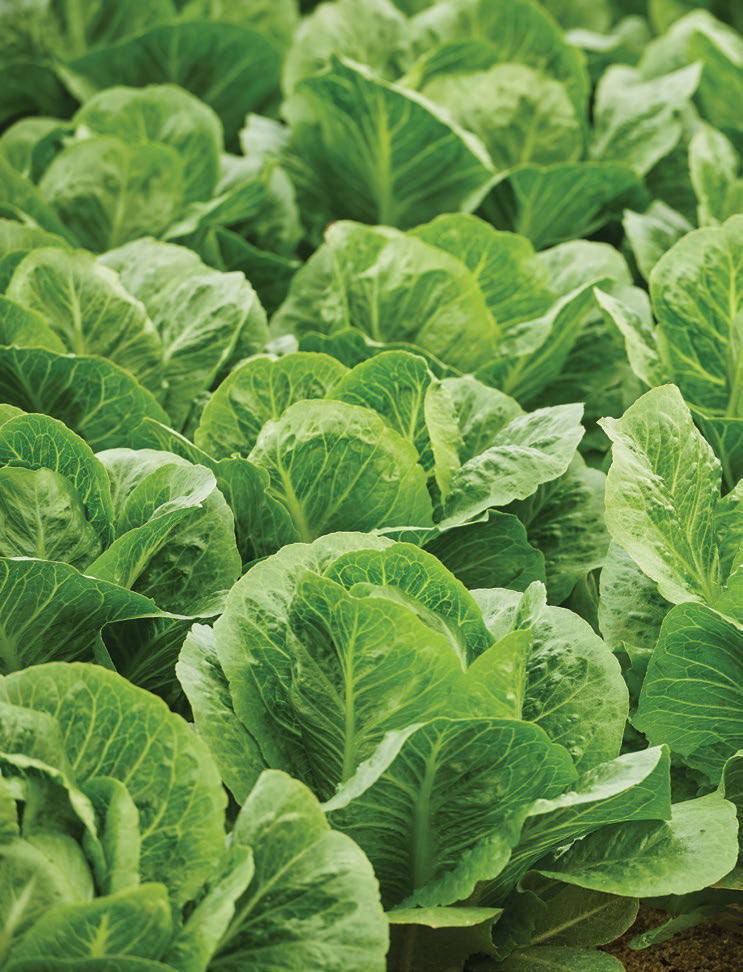
trends BUSINESS

BIO-REVOLUTION
THE key trends at Hort Connections 2023 were sustainability, traceability, softer chemicals and the race for compostible packaging. We even hear there was a bigger push for organics, coming from the major supermarkets. According to agronomist and Natural Solutions Australia’s Darcy Filmer, who has been “playing with beneficial bugs for the past 20 years”, but launched his business only 18 months ago: “Sustainability is a big part of it these days... the market is making it happen. Whether that is for the right or wrong reasons, it’s happening”. Danny Thornton, general manager of Agreva, has the same message. “It has started in Europe... they have put some real restrictions around synthetic fertilisers, synthetic chemistry and improving and increasing the amount of organic land. Our customers who are export focused, have picked up on this. We still need to have good chemistry, but there’s a lot of legislation coming in that suggests we need to lift our beneficial profile, our safety profiles and it’s starting to happen quite quickly now.”
TREND
Review
Our wrap of the Hort Connections 2023 trade fair and conference.
FAUX-PLASTIC:
THE RACE IS ON
PLASTICS may be fully biodegradable within two years, according to Garry Sandercock, managing director of Propak Industries. “There’s a lot of misunderstanding and misconceptions out there around biodegradable plastics. To biodegrade, a product needs to be composible. That means eaten by earth worms and that means no microplastics. There are a lot of people making claims about bioplastics, but they are not true. We know, because we test them. And that is what we are working towards for the future.” The company has partnered with others in this space and is putting a lot of money into R&D. “We are testing all the time,” says Garry. “It’s hard to put a timeframe on it, but within the next two years we will have something.”
TRACKING
TECH WATCH
KEEPING an eye on your produce while it’s in transit was a big theme of Hort Connections. Small tracking devices that can attach to your bins or pallet and feed back information on: temperature, humidity, if a door to your produce has been opened and for how long, where it is located... Other tracking devices are designed to tell where your bin/pallet is located and if your entire shipment has reached its destination. And this information is being fed to you from small devices that clip into the crevices of your bins.
BIN TECH
BIN technology is getting smarter. JRC is one of the frontrunners, with two new products designed to save costs on transport. “Chep has now taken on our Lock & Save Produce Bin. This bin is designed for reuse and has a lifespan of nine-10 years. Previously, Chep could only fit 66 bins in a truck space. Our bin is the same footprint and holds the same weight, but we can get three times the volume in a truck space,” says Ronan Maguire of JRC. The bin is also 30% lighter than standard bins and, thanks to its lock and unlock system, can provide a stacking height of 26 nesting bins and 38 pallets for the large 780L nesting bins. “It’s all about lessening transport costs,” says Ronan. They have also just released a pallet replacement pitched at the export market. “It holds up to two tonne, doesn’t have to be fumigated and is recyclable, so can be consciously disposed of at the other end,” he reveals.
SEASOL
CLEVER GENES
WE all know Seasol is good, but new research proves its even better than we thought. Over the past three years, Seasol has been putting a lot of money into finding out why its product works so well. The secret may come down to genes. The company sources three different types of kelp from two locations around the world – Tasmania (King Island) and in the North Atlantic Ocean. This kelp is washed up on the beach, dries out, then washes back into the ocean where it rehydrates. And studies by Seasol and Deakin University are confirming they are right. It appears Seasol has the effect of preparing or ‘priming’ plants for stress at a genetic level. The study showed that a selection of plants treated with Seasol wilted one day later than plants not watered with Seasol. This means that on a hot day when a watering system may not be about to meet the demands of a crop, Seasol treated plants may maintain growth while the untreated ones have wilted and lost productivity. And it all comes back to kelp genes.
FUTURE FOOD
IT’S HERE
WHAT is the future of food? Future for Food futurist Tony Hunter shared some realities and thought-provoking ideas, plus challenged some of our notions around GMO. So what is the future of food? He says it’s all about technology: “You cannot talk about food from farm to fork without talking about technology. Food used to be a sleepy technological backwater compared to the electronics industry, but no more. Technology is everywhere in food. After six years of research, I’ve come to the conclusion that we’re approaching the intersection of five exponential technologies that will determine the future of food for decades to come.” Here’s a round-up of what he had to say:
Alternative Proteins A company in the Netherlands is growing grass for human consumption. It claims they can grow 2.5 times as much protein in one acre of grass than in one acre of soybeans. A company in Australia, called Leaf, is doing the same thing, but with leaves.
Cellular agriculture Growing food in a lab: they are doing it with chicken and are looking at chocolate and coffee, which are both under threat due to deforrestation and pollination. What’s next?
Genomics/gene editing Capitalising on gene mutations, or changing them in a lab: think a pink pineapple, potatoes that taste like mash with butter and using AI technology to perform genomic analysis to create higher protein foods.
Synthetic Biology GMO gets bad wrap, but Tony believes it’s suffered from bad publicity and
bad scientific information. The sweet potato, for instance, evolved 8000 years ago through GMO
(due to the DNA of a bacteria) and most cheese is GMO. There are also now instances of plants being used to grow cheese and lettuce growing vanilla (Google plant molecular farming).
While people in our age group may find this challenging, consider that in 2030-40, the tech-savvy kids of today will be adults, and they have no fear of technology.
MAX TEPLITSKI ON
CONSUMERS
WHAT are consumers looking for?
That was one question posed by the chief science officer at the International Fresh Produce Association, Max Teplitski. “Consumers are more likely to purchase locally grown food. They are looking for something that’s environmentally friendly, in compostible packaging or something that is sustainably grown. Up to 57% of consumers say they feel better when they buy sustainable brands or products.”
WHAT are consumers willing to pay for?
“Consumers are not willing to pay more for bioengineering or even vertical farming. This tells us that consumers are so detached from food production they don’t see value in how a crop is grown and produced. What they do see value in is quality, price and nutritional energy. Focus not on how it was made or grown, but focus on taste.”
HOW are consumers choosing your food?
“Digitisation. Consumers want to know everything about their food. This will increase in the next three to five years. Consumers will scan a QR code once to make a decision about a brand. Once they learn they like it, they will stop scanning.”
GREENHOUSE
REVOLUTION
BIG trends are emerging in the greenhouse industry. “The technology is five or six years old in North America, but we are starting to see Australian growers become interested in that space,” says Folco Faber of Apex Greenhouses. “They are highly automated models with a very high level of climate control and automation in terms of crop management.” Folco says the pricing will range from $400sqm for the entry level greenhouse to $2000sqm for the “Rolls Royce” version. And what does it give you? “... mechanical cooling, LED lights, full automatic seeding, crop management and harvesting – basically no people touch the crop,” says Folco. “And that is the future.”